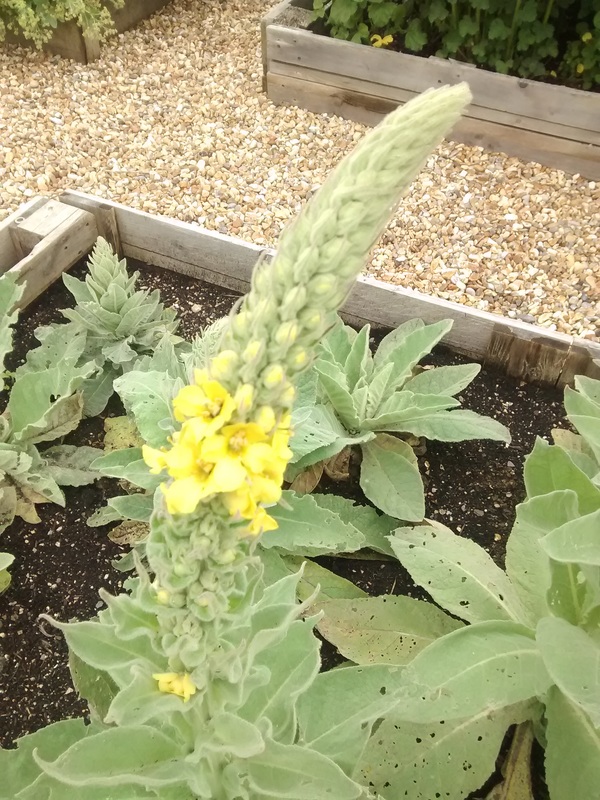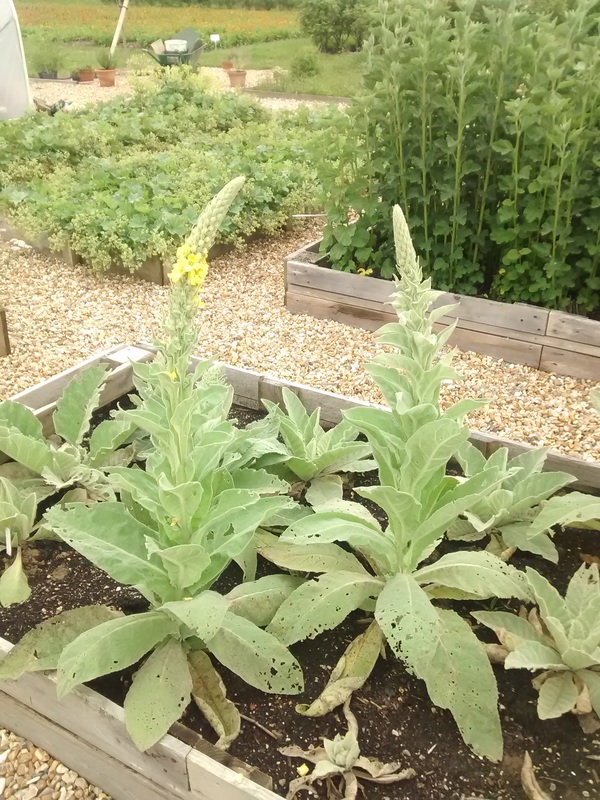|
Mullein is a new addition to the Neal's Yard garden, and was added to our order list last year. Luckily we had it popping up all over the place, so we dug it up, putting the smaller plants into the poly tunnel, and transplanting them out to raised beds to join the larger ones once established. They were doing well, until we discovered that caterpillers love to munch their furry leaves (as you can see in the picture above). I have since discovered that they are in fact Mullein moths! Although these hungry caterpillers are striking to look at, they were ruining our crop; and as we work on an organic site, every morning was spent picking them off, and releasing them as far away as possible. mullein overview & medicinal uses: Name: Verbascum thapsus Family: Scrophulariaceae (figwort) Parts used: Leaf, flowers Some random facts:
Habitat and cultivation: Mullein is common in the UK, Europe, North America, and can even be found in temperate parts of the Himilayas. It is a hardy plant - drought and frost resistant, can grow in poor soil, and is happiest on waste ground, roadsides, and open fields. Mullein is biennial and grows in 2 stages; in its first year it forms a rosette, with soft, furry, thick leaves with a whitish tone. In its second year, one solitary stem grows through the middle, and small yellow flowers start to form, with what I thought looked like tiny yellow balls! (which you can almost see in the picture above). You harvest this plant in its second year, before it flowers if you want to use the leaves. This is when it is at its most potent medicinally and energetically - once it has flowered, the plant's energies have been utilised and it goes to seed. All you do it cut that long candle stem as far down as you can, and remove the leaves However we have let a couple go to flower so we can collect seed to propogate next year. Medicinal actions: Expectorant, demulcent, anticatarrhal Medicinal uses: Mullein is primarily used for anything respiratory; and can be used topically as a poultice for mumps, inflammed/swollen lymph nodes and hemorrhoids. The flowers are a known remedy for ear aches and infections when infused in olive oil.
how to make mullein ear drops:
* To sterilise jar: Wash in hot soapy water and rinse. Place onto a baking sheet and into oven at 140C/120C fan, gas mark 1 until completely dry.
1 Comment
Emily Boese
11/7/2016 08:35:56 pm
Great article! Good information and lovely pictures. Thanks for the recipe for the ear oil :)
Reply
Leave a Reply. |
AuthorEmma is passionate about promoting good health, and likes to keep things simple. She enjoys yoga, meditation & being outdoors, yet likes to indulge in coffee, wine & cake - Everything in moderation! |





 RSS Feed
RSS Feed
